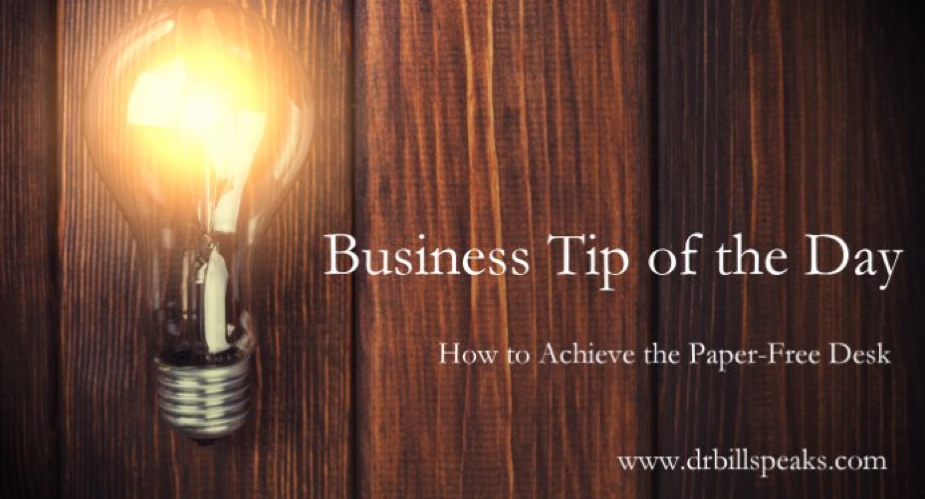The Goal
A desk completely free of paperwork and folders has been my illusive goal for many years. While the coming of the digital age certainly helped reduce my paper load, there are always time-sensitive, physical files and supportive documents that have to be stored somewhere, at least temporarily. Scanning was a partial solution, but not a complete one.
The Challenges
This year, I finally achieved a bare desk and have kept it that way. In the past, two main hurdles seemed to stand in the way of my quest for a clean workspace:
1. Fear of Forgetting: If I didn’t keep that urgent file on my desk, I sometimes forget to address it. I suffered from the classic disorder, “out of sight, out of mind.”
2. Fear of Losing Time: If I filed the paperwork, even close by, I might not recall exactly where I put it. Each paper-bound project had its own file and in a year’s time I could have hundreds. Even if I filed things alphabetically, if I didn’t remember exactly how I labeled a file or its specific contents, I could waste time looking through scores of files.
The Breakthrough
This year I finally did it. I now maintain a paper-free desk. It is refreshing to arrive at my desk and find nothing on it. What is the payoff? I no longer feel distracted or overwhelmed. And, I can be far more creative and immediately so. Here’s what I did differently:
The Solution
To address concern #1, not always remembering that urgent task unless I had its paperwork on my desk, I began to experiment with digital to-do/organizing apps that would sync to all my digital work platforms–my computers and smartphone. I also stopped relying on my email inbox as my to-do list. It was too easy to miss important information that way. Instead, I chose Wunderlist as my digital to-do app, although there are many other fine alternatives. Now no task goes anywhere else but into Wunderlist and I check and add to it throughout the day from everywhere. Even better, I can create a pop-up reminder AND an email to alert me of an important task, a huge “top of mind” help.
Like many readers, I am a big fan of Evernote, another excellent app which syncs everywhere. I use Evernote to capture all ideas, research, and to-dos on the fly. For example, as I am walking out of a meeting. Evernote serves as a lobby, of sorts, to Wunderlist. It’s a place for raw information to be stored and sorted later. Tasks that merit a time-specific to-do in Wunderlist are transferred there during my daily personal business meeting.
The solution to concern #2, not remembering exactly where I filed important materials was a bit less intuitive. When the answer came, it was embarrassingly simple:
Create a digital “Finder File” that you sync and prominently display on all your devices. In it, simply list where to find the paperwork or digital information for each important project.
Example: Need to shop your health insurance and don’t want to forget where you have stored your research. Simply add the project name and where to find your information in your Finder File.
Some projects are filed in obvious places, others are less likely to be found because the information is stored in a temporary or less intuitive place, or you have simply created and stored too many files to quickly find your information. This is where a Finder File is essential.
By consistently using these two methods- 1. Good to-do apps and 2. A Finder File, you will be able to clear your desk with the confidence you can immediately retrieve what you need to complete your projects.
Try it. You too may achieve “paper zero,” the day your last file leaves your desktop.

